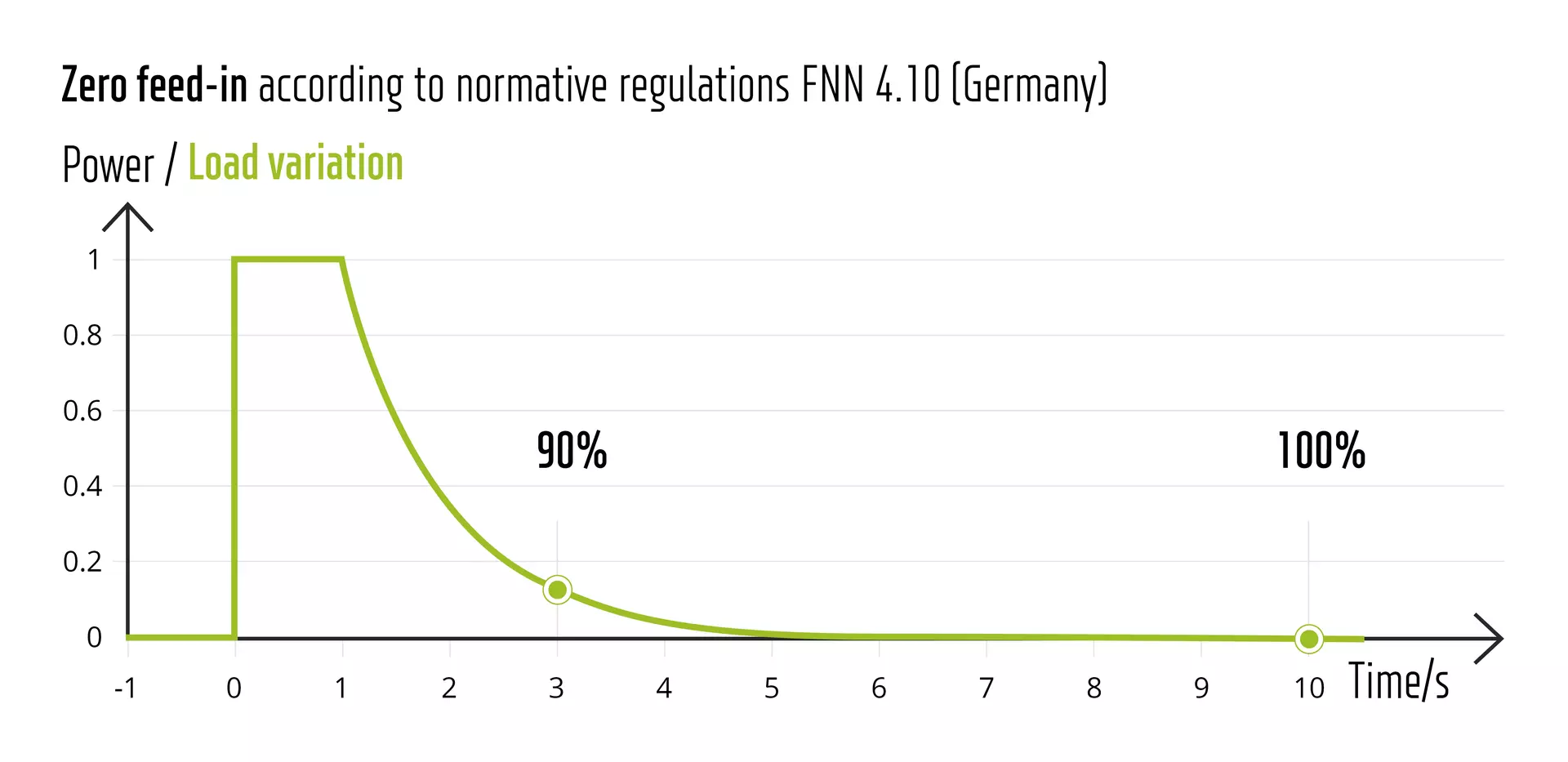CURTAILING EXCESS POWER IN LINE WITH FNN REQUIREMENTS
An increasing number of firms with high electricity requirements are looking to cover as much of this demand as possible from their own PV installations or other renewable energy sources, for both economic and environmental reasons. Because of limits set on the maximum amount that can be fed in, in many cases the only option is a less powerful PV installation, which will at no point produce enough excess to risk overloading the grid with high feed-in levels. However, these installations can also never cover a firm’s own requirements, leading to high additional costs for drawing electricity from the public utility grid.
The solution: An SG-ready (smart grid-ready) battery storage system with intelligent inverter and storage system configured for zero feed-in usage. The system ensures that excess photovoltaic energy is not fed into the utility grid when the battery storage system is fully charged. This technology allows firms in areas with a weak grid infrastructure to meet their high demand from their own electricity supply.
YOUR BENEFITS
- Large PV installations can be operated anywhere, irrespective of the local utility grid
- High cost savings, with demand covered by self-consumption
- Optimum efficiency for the PV installation when combined with forecast-based charging, leading to quick amortization

 Tiếng Việt
Tiếng Việt 中文 (中国)
中文 (中国)
